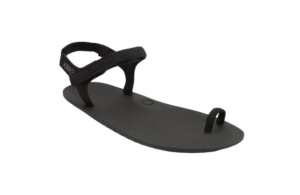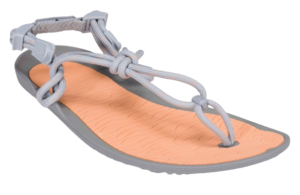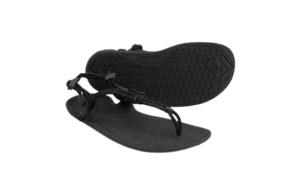Step into the extraordinary realm of barefoot sandals
The Ultimate Guide to Buying Barefoot Sandals for Beginners
As someone who has explored the world of barefoot footwear for years, I understand the significance of choosing the right pair of sandals. It’s not just about style; it’s about your comfort and foot health. In this ultimate guide, we’ll dive deep into the realm of barefoot sandals, helping you make informed decisions and paving the way for a more comfortable and natural stride.
Why Choosing the Right Barefoot Sandals Matters
Before we embark on this sandal journey, let’s understand why selecting the right barefoot sandals is crucial. These unique footwear options are not just about fashion; they’re about mimicking the natural feel of walking barefoot while providing protection. Here, we’ll explore the diversity of barefoot sandals and their unique characteristics, setting the stage for your journey into the world of open-toe footwear.
Discovering the World of Barefoot Sandals
Barefoot sandals have evolved significantly in recent years, offering a sandal for every occasion. From casual outings to special events, there’s a barefoot sandal designed to match your style and needs. Many brands even offer customization, ensuring your sandals are a perfect fit for you. As we proceed, we’ll address common misconceptions and mistakes people make when choosing barefoot sandals, making your purchase process much smoother.
Unveiling the Characteristics of Barefoot Sandals
To truly understand barefoot sandals, we need to grasp their essential characteristics. These sandals follow the same principles as all other barefoot footwear. They feature a thin, flexible, zero-drop sole, and their toebox shape mimics our natural foot shape. However, barefoot sandals have an additional critical characteristic: proper fixation. Unlike flip-flops or crocs, which can lead to foot problems due to improper fixation, barefoot sandals must hold the heel securely. We’ll explore various fixation methods to achieve this essential element.

Exploring the Different Types of Barefoot Sandals
Barefoot sandals come in various designs, each with its unique advantages and disadvantages. In this section, we’ll delve into the three primary types:
Toe Thong Sandals: Originating from the huarache running sandal, these sandals achieve excellent fixation with a single strap running diagonally between the toes. We’ll also discuss variations like the T-strap design.
Cross Strap Sandals: Known for their dressier appeal, these sandals don’t have anything between your toes, making them a great choice for those who dislike toe rubbing. We’ll explore their suitability for different occasions and activities.
Toe Loop Sandals & Other Types: Beyond the basics, toe loop sandals offer robust fixation and toe freedom. We’ll also touch on innovative designs by brands like Juuri and Wildling, which push the boundaries of sandal design.
Selecting the Perfect Pair of Barefoot Sandals
Choosing the right size and fit for your barefoot sandals can be a bit challenging. Unlike closed shoes, the diversity of foot shapes is more pronounced in sandals. Here, we’ll guide you through the process, emphasizing that the sandal shape should closely match the shape of your foot. We’ll discuss toe position, width, and length, providing insights on using printable templates. Additionally, we’ll highlight the importance of accommodating toe expansion for ultimate comfort.
In the next section, we’ll take a closer look at some types, fastening methods, and customization options for your barefoot sandals. These elements can significantly impact your overall sandal experience, and we want to ensure you make the right choices to suit your lifestyle and preferences.
What Makes a Sandal ‘Barefoot’? Unraveling the Essentials
Welcome back to our journey through the world of barefoot sandals. In this section, we’re diving deep into what makes a sandal truly “barefoot.” Understanding these essential characteristics is key to finding the perfect pair that promotes natural movement and comfort. So, let’s get started on our quest to barefoot enlightenment.
The Thin and Flexible Soles
Picture this: you’re strolling on a beach, feeling the warm sand under your feet, and the sensation is like walking on air. That’s the kind of feeling you want from your barefoot sandals. Thin, flexible soles are the cornerstone of barefoot design. They mimic the natural flexibility of your feet, allowing them to move freely as if you were barefoot.
Key Takeaway: Look for sandals with soles that are thin and flexible, typically in the range of 5-8 mm, for a more natural walking experience.
Zero-Drop – Finding Balance
In the world of barefoot, “zero-drop” is a buzzword you’ll often encounter. But what does it mean? It means that the sole of the sandal is flat, with no height difference between the heel and the forefoot. This design aligns your feet and promotes a more natural posture. It’s like walking on level ground wherever you go.
Personal Anecdote: I remember my first pair of zero-drop sandals. The immediate difference in how my feet felt was astonishing. No more unnatural heel elevation – just a harmonious stride.
Key Takeaway: Opt for zero-drop sandals to maintain a more balanced and natural posture during your walks.
The Toebox – Room to Breathe
Your toes need space to spread out and move as nature intended. A proper toebox shape ensures this freedom. It allows your toes to splay and grasp the ground, enhancing stability and balance. So, when you’re on the hunt for barefoot sandals, keep an eye out for a spacious and accommodating toebox.
Fun Fact: Did you know that traditional footwear often cramps our toes, leading to various foot issues? Barefoot sandals prevent this by offering room for your toes to play.
Key Takeaway: Prioritize sandals with a spacious toebox to give your toes the freedom they crave.
Fixation and Heel Support – The Unsung Heroes
Now, let’s talk about an often-overlooked aspect: fixation and heel support. The proper fixation ensures that your sandals hold your feet securely. Imagine walking in flip-flops – your toes constantly grip the sandal to keep it from slipping. This can lead to foot problems. Barefoot sandals provide the right fixation, eliminating the need for your toes to overwork.
Key Takeaway: Opt for sandals that offer proper fixation and heel support to maintain a comfortable walking pattern.
Exploring Different Barefoot Sandal Designs
In this section, we will embark on a journey to discover the diverse and innovative designs of barefoot sandals. Whether you’re looking for something casual, dressy, or uniquely functional, there’s a barefoot sandal style for you.
Toe Thong Sandals – The Classic Choice
Toe Thong Design: Picture a single strap running diagonally between your big toe and its neighbor, securing your sandal to your foot. This ingenious design originated from the traditional huarache running sandal and remains a classic choice among barefoot enthusiasts.
Why Choose Toe Thong Sandals?
- Excellent Fixation: The toe thong design ensures excellent foot fixation with just one strap.
- Freedom for Toes: Your toes can move freely, mimicking the natural gait of walking barefoot.
- Versatility: Toe thong sandals are available in various models, from sports to casual wear.
Personal Experience: I remember my first pair of toe-thong sandals. The feeling of stability and freedom in my toes was unlike anything I’d experienced in traditional footwear. It was a game-changer for me.
Key Takeaway: Toe thong sandals offer excellent fixation and toe freedom, making them a popular choice for various activities.
Cross Strap Sandals – Versatile and Dressy
The Cross Strap Appeal: Cross-strap sandals bring a touch of elegance to the barefoot world. Unlike toe thong sandals, there’s nothing between your toes, making them an ideal choice if you prefer no rubbing in that area. They are versatile, and suitable for work, a stroll around town, or even special occasions.
A Word of Caution: While cross-strap sandals offer style and versatility, they may not provide the same level of lateral stability as toe-thong sandals. This becomes noticeable when walking on uneven, steeper slopes or in wet conditions.
Pro Tip: Consider the terrain and activities you plan to engage in when choosing between toe thongs and cross strap sandals.
Key Takeaway: Cross strap sandals are fashionable and versatile but may offer less lateral stability in certain conditions.
Toe Loop Sandals and Beyond – Innovative Designs
The Unique Appeal of Toe Loop Sandals: Beyond the classic designs, you’ll find toe loop sandals gaining popularity. This fastening method also provides excellent lateral load support while allowing ample toe freedom. The key is ensuring the loop is positioned correctly and has the right circumference for your toes.
Innovative Brands: Some barefoot sandal brands take customization to the next level. Brands like Juuri offer the flexibility to choose your preferred way to tie them using colored straps. Wildling, on the other hand, has created a sandal that’s more than meets the eye, resembling a shoe with thoughtfully chosen holes.
Unique Features: When exploring the toe loop and other innovative designs, look for sandal models with well-positioned loops and straps tailored to your foot shape.
Key Takeaway: Toe loop sandals provide excellent lateral support, but ensure the loop’s placement suits your toes. Innovative brands offer unique customization options.

The Journey Continues
In this section, we’ve uncovered the beauty of different barefoot sandal designs. Toe thong sandals offer excellent fixation and toe freedom, cross strap sandals provide versatility, and innovative designs like toe loops open up exciting possibilities. Now, let’s move on to the next chapter, where we’ll discuss the crucial task of choosing the right barefoot sandals for your feet.
Selecting the Perfect Pair for Your Feet
As we delve deeper into the world of barefoot sandals, we arrive at a crucial junction – the art of selecting the perfect pair that will complement your feet like no other footwear can. In this section, I’ll guide you through the intricacies of choosing barefoot sandals that are tailored to your unique needs and preferences.
The Challenge of Choosing the Right Size
One of the first hurdles you’ll encounter when buying barefoot sandals is sizing. Unlike traditional shoes, barefoot sandals come in various foot-specific shapes. Here are some key points to consider:
Length: Measure your feet carefully from the longest toe to the heel and refer to the brand’s sizing chart.
Toe Position: Ensure that your toes align with the sandal’s toe box. Your toes should reach the end without feeling cramped or leaving excess space.
Width: Look for sandals that match your foot width. A good fit provides room for your toes to spread naturally.
Printable Templates: Some brands offer printable foot templates that you can use to verify the correct size. It’s a handy tool to ensure a precise fit.
My Experience: I once ordered a pair of barefoot sandals online without checking the sizing chart. When they arrived, they were too snug, and my toes felt cramped. Lesson learned: always double-check the sizing!
Key Takeaway: Taking accurate measurements and referring to sizing charts or templates is crucial for choosing the right size of barefoot sandals.
Matching Sandal Shape to Foot Shape
Every foot is unique, and your choice of sandals should reflect that individuality. Consider the natural shape of your feet when selecting barefoot sandals:
Arch Height: Some people have higher arches, while others have flatter feet. Look for sandals that support your arch type.
Toe Shape: The shape of your toes, whether they’re straight or have slight curvatures, should align comfortably with the sandal’s toe box.
Foot Width: If your feet are wider or narrower than average, opt for sandals that accommodate your specific width.
Toe Spacing: Barefoot sandals should allow your toes to spread naturally, promoting balance and stability.
Pro Tip: If you have any foot conditions or require extra support, consider consulting with a podiatrist or a footwear specialist for recommendations.
Key Takeaway: Matching the shape of your sandals to your natural foot shape enhances comfort and support.
Room for Toe Expansion
One of the core principles of barefoot walking is allowing your toes to splay and expand as you walk. To achieve this, ensure your sandals have:
A Wide Toe Box: Look for sandals that mimic the natural shape of your toes and allow them to spread comfortably.
Zero Drop: Zero-drop soles, where the heel and forefoot are at the same level, encourage a natural gait and optimal toe expansion.
Personal Insight: Wearing barefoot sandals with ample room for toe expansion feels liberating. It’s like giving your feet the space they’ve always craved.
Key Takeaway: Barefoot sandals should provide sufficient width and zero-drop soles for unrestricted toe expansion.
The Journey Continues
In this section, we’ve unraveled the art of choosing the perfect barefoot sandals. From accurate sizing and matching foot shape to embracing toe expansion, you’re now equipped with the knowledge to make an informed decision. Our exploration doesn’t end here; the next section will dive into the fascinating world of sole types, fastening methods, and customization possibilities.
Tailoring Your Barefoot Sandal Experience
In the enchanting realm of barefoot sandals, where each step resonates with comfort and freedom, one can’t help but marvel at the diversity of experiences. In this section, we’re going to delve deep into the heart of barefoot sandals – the soles, fastening methods, and the exciting realm of customization. Buckle up; we’re about to tailor your barefoot sandal experience like never before.
The Quest for the Perfect Sole
The sole of a barefoot sandal is its very foundation, the interface between your feet and the earth beneath. Here’s what you need to know about this vital component:
Sole Thickness: The thickness of the sole can vary significantly among barefoot sandals. Thinner soles provide a more natural feel, while thicker ones offer more protection. Consider your activity and terrain when choosing.
Flexibility: A good barefoot sandal sole is flexible, allowing your feet to move naturally. You should be able to bend the sole easily.
Tread Depth: Depending on your outdoor adventures, choose a sole with an appropriate tread pattern. Deeper treads are ideal for rugged trails, while shallower ones work well for urban environments.
Personal Experience: I once wore barefoot sandals with thick soles on a hike, thinking they’d offer more cushioning. However, I found myself missing the ground feel. It’s essential to match sole thickness to your preferences.
Key Takeaway: Select a sole thickness, flexibility, and tread depth that align with your intended activities.
The Footbed Material Matters
The material of the footbed can make a significant difference in your comfort and stability. Some common materials include:
Cork: Offers excellent moisture-wicking and conforms to your foot’s shape over time.
EVA Foam: Lightweight and cushioned, EVA foam footbeds provide shock absorption.
Leather: A natural choice, leather molds to your feet and offers durability.
Synthetic Materials: These often combine durability with moisture-wicking properties.
Consider your preferences and any specific needs, such as vegan-friendly options, when choosing your footbed material.

Unlocking the Secrets of Fastening
Barefoot sandals employ various fastening methods to secure your feet comfortably. These include:
Buckles: Adjustable buckles allow for a custom fit and ease of putting on and taking off sandals.
Velcro: Velcro straps offer quick adjustments and convenience.
Strapping: Some sandals use strapping systems that wrap around your feet, providing a secure fit.
Toe Loops: Certain designs incorporate toe loops for added stability.
- Lace-up Barefoot Sandals: These sandals serve both functional and aesthetic purposes, providing a stylish and unique alternative to traditional footwear. As for lace-up barefoot sandals I personally prefer Xeros.
Choose a fastening method that aligns with your preferences and the level of security you desire.
The Allure of Customization
For those who crave the ultimate in personalized comfort, custom-made barefoot sandals are the answer. Some brands offer customization options, allowing you to choose your sole thickness, footbed material, and even the color and design of your sandals. This is the pinnacle of tailoring your barefoot sandal experience to perfection.
The Grand Finale
As we conclude our journey through the world of barefoot sandals, let’s recap our adventure:
Introduction: We embarked on this ultimate guide, understanding the significance of choosing the right barefoot sandals.
Characteristics of Barefoot Sandals: We dived into the essentials, emphasizing thin, flexible soles, proper toebox shape, fixation, and heel support.
Types of Barefoot Sandals: We explored various designs, from toe thong sandals to cross strap and toe loop options.
Selecting the Perfect Pair: We learned to conquer the challenges of sizing, match sandal shape to our feet, and ensure room for toe expansion.
Tailoring Your Barefoot Sandal Experience: In this section, we delved deep into sole selection, footbed materials, fastening methods, and the allure of customization.
It’s been an incredible journey, one that has unlocked the secrets to a world of barefoot comfort and freedom. Now, armed with knowledge, you’re ready to make an informed choice when selecting your ideal pair of barefoot sandals. Remember, it’s all about comfort, proper fit, and embracing the joy of barefoot living.
So, what are you waiting for? Your barefoot adventure awaits.
Get ready to explore the world of barefoot sandals!
- Frequently Asked Questions
Barefoot sandals are designed to mimic the feeling of walking barefoot. They have thin, flexible soles and a unique toebox shape, promoting natural foot movement.
The right barefoot sandals offer comfort and support, benefitting your foot health and overall well-being.
Barefoot sandals have thin, flexible, zero-drop soles, a wide toebox, and proper fixation, ensuring your feet can move naturally.
These characteristics promote proper posture, balance, and foot strength while reducing the risk of common foot problems.
Toe thong sandals have a toe thong or T-strap design, offering minimalist comfort and freedom for your toes.
Cross-strap sandals combine elegance with comfort, making them versatile for both casual and dressier occasions.
Toe loop sandals have a unique design, with a loop around the big toe, providing a secure fit and distinctive style.
Measure your foot and refer to the brand’s size chart. If in doubt, opt for the larger size for comfort.
A good fit minimizes discomfort and supports your foot’s natural structure, reducing the risk of issues like bunions.
Thicker soles provide more protection, while thinner soles offer a better ground feel. Choose based on your preferences and activities.
Different methods, like buckles or velcro, offer various levels of adjustability. Pick one that suits your foot shape and preferences.
Custom-made sandals ensure a perfect fit and can address specific foot issues or preferences.
Barefoot sandals are a type of minimalist footwear designed to mimic the experience of walking barefoot while providing some protection for the soles of the feet. Unlike traditional footwear such as Crocs, which have a more defined structure and cushioning, barefoot sandals typically feature thin soles without arch support or additional padding, allowing for greater foot flexibility and a natural ground feel.
Someone might choose leather for their barefoot sandals because it is a durable natural material that molds to the shape of the foot over time, offering a personalized fit. Leather also has breathable properties that can provide comfort in various temperatures. However, leather may not be suitable for water activities compared to synthetic materials.
Beginners should measure their feet according to the manufacturer's guidelines, considering both length and width. It is important to ensure that there is enough space to allow natural foot movement without excessive slipping. Checking customer reviews and size charts can also be helpful. Some manufacturers may offer adjustable straps or laces for a customizable fit.
Beginners should look for barefoot sandals with thin yet durable soles that protect them while still allowing them to feel the terrain beneath their feet. A wide toe box is essential to enable toes to spread naturally. Additionally, secure fastenings such as adjustable straps will help keep the sandals in place without restricting movement.
Barefoot sandals can be used by beginners for a variety of activities such as walking, hiking, yoga, and water sports; however, one should select a pair designed specifically for their intended use. For example, those engaging in water activities should opt for quick-drying materials with good traction on wet surfaces, whereas hikers might need thicker soles with more aggressive tread patterns.

